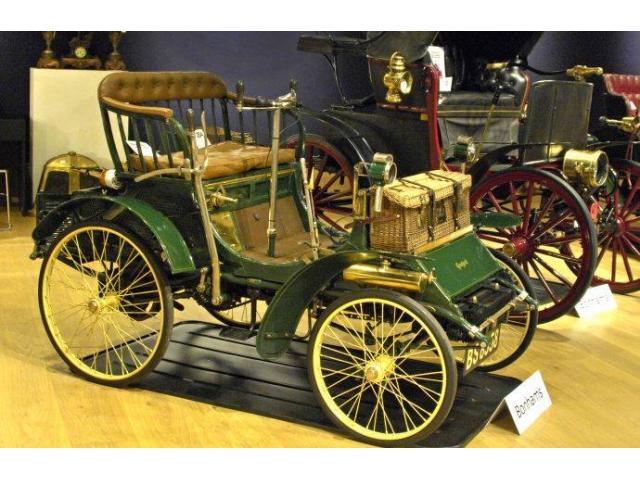1899 Peugeot Type 26
- Brand: Peugeot
1899 Peugeot Type 26
Formerly producers of tools, coffee mills, umbrella spikes and corsetry, Peugeot commenced its long-standing connection with wheeled transport in 1885 when it added cycle manufacture to its portfolio. Amongst the world's oldest surviving motor manufacturers, the company commenced car production in 1889 with a steam-powered tri-car but soon abandoned steam in favour of the internal combustion engine, building a succession of ever larger automobiles before introducing the first of its famous Bébé light cars in 1900. Step by step Peugeot modernised its designs, adopting the steering wheel in 1901 on the Type 36 and front-mounted engines on all of its new models in 1902. Singles, twins and four-cylinder cars were produced at this time, some with chain and others with shaft drive, the latter becoming universal after 1909.
This early Peugeot, was delivered to Toulouse on 11th October 1899 as stated in a letter from Peugeot on file, this information being taken the original factory records, which still exist.
This model, retrospectively designated by Peugeot as the Type 26, was announced in the French and British motoring press in the summer of 1899. It is pictured and described in The Autocar (1st July 1899), La Locomotion (20th July 1899) and La France Automobile (17th Sept 1899) and is also shown in contemporary Peugeot literature (copies on file.) This was one of the few models with a single drive chain.
The horizontal 3CV twin-cylinder engine, designed by Peugeot, is located at rear and supersedes the Daimler design used in Peugeot's very early cars. Probably fitted with hot-tube ignition originally, it is now fitted with a replica trembler coil distributor, connected to the oscillating shaft that activates the exhaust valves and driven from a figure of eight grove in the centre flywheel. The inlet valves are of the atmospheric type, while the internal governor was removed earlier in the car's life. An electric water pump has been sympathetically fitted as the existing pump proved unreliable (it is in the accompanying box of spares). Steering is by the Peugeot handlebar system linked by a chain to the mechanism mounted on the chassis by the front axle. The clutch and foot brake remain in their original positions, with the brake pedal on the left.
This Peugeot is dated by the Veteran Car Club and also has a Science Museum Certificate and a letter from the Society of Automotive Historians. This car has been found in 19 locations, most notably in the centre of the removable bodywork covering the engine. There may be others yet to be discovered.
Descriptions & pictures by bonhams & classicdriver & other
| Specification | |
| Production Start | 1899 |
| Country of origin | France |
















